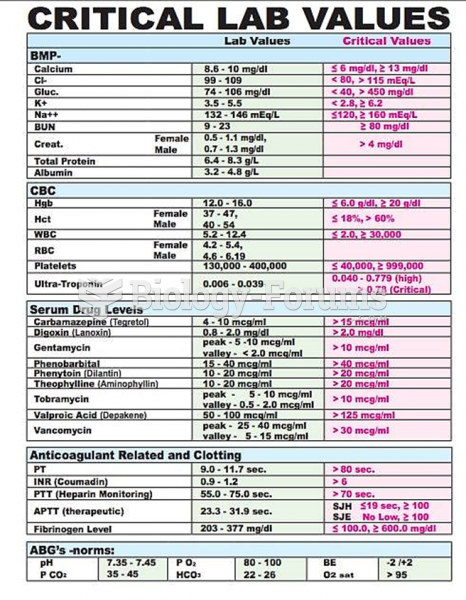|
|
|
The ratio of hydrogen atoms to oxygen in water (H2O) is 2:1.
Though Candida and Aspergillus species are the most common fungal pathogens causing invasive fungal disease in the immunocompromised, infections due to previously uncommon hyaline and dematiaceous filamentous fungi are occurring more often today. Rare fungal infections, once accurately diagnosed, may require surgical debridement, immunotherapy, and newer antifungals used singly or in combination with older antifungals, on a case-by-case basis.
About 80% of major fungal systemic infections are due to Candida albicans. Another form, Candida peritonitis, occurs most often in postoperative patients. A rare disease, Candida meningitis, may follow leukemia, kidney transplant, other immunosuppressed factors, or when suffering from Candida septicemia.
Children with strabismus (crossed eyes) can be treated. They are not able to outgrow this condition on their own, but with help, it can be more easily corrected at a younger age. It is important for infants to have eye examinations as early as possible in their development and then another at age 2 years.
People with high total cholesterol have about two times the risk for heart disease as people with ideal levels.
 Zonal wind speeds on Uranus. Shaded areas show the southern collar and its future northern counterpa
Zonal wind speeds on Uranus. Shaded areas show the southern collar and its future northern counterpa
 Correlations on tests for a number of cognitive abilities are higher for monozygotic twin pairs (who ...
Correlations on tests for a number of cognitive abilities are higher for monozygotic twin pairs (who ...





